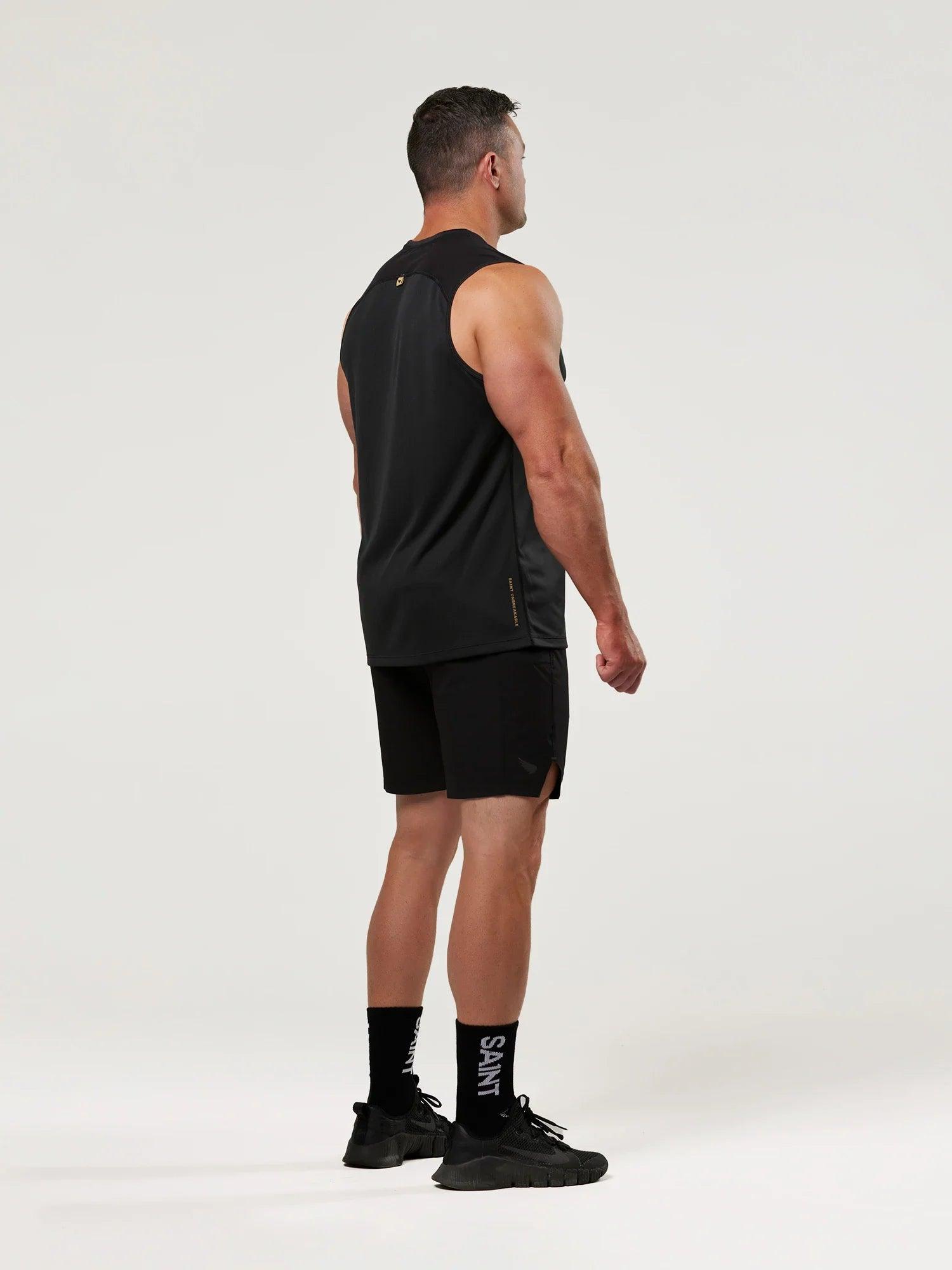Have you ever wondered why pro runners wear such tight clothing? Simply put, it's because wearing compression gear can help runners perform better and recover faster, helping athletes stay at the top of their game.
If you're a runner at any level then you can benefit from wearing compression clothing as well. Check out the full rundown below if you want to get the most out of your own performance.
How Does Compression for Running Work?
Modern compression clothing uses controlled pressure to improve the amount of oxygenated blood going to your muscles, and the rate of deoxygenated blood going back to your heart.
For example, a pair of running tights will be at its tightest around the ankle and slowly decreases in pressure as it goes up your leg. This helps quickly push deoxygenated blood up your legs and towards your heart.
The whole process allows you to run further because more oxygen is going into your blood, and also recover faster because lactic acid is being removed faster from your body.
Choose the Right Compression Gear
Types of Compression Clothing for Runners
- Compression running tights: Tights that go down the entire length of your legs, making sure that nothing is missed.
- Compression shorts: Made to be comfortable for longer runs like marathons.
- Compression socks: Provides support both during and after a workout.
- Recovery compression tights: Reduces muscle movement to prevent damage and minimise fatigue.
How Compression for Running Boosts Your Performance
Improves Recovery
Reduces Muscle Fatigue
A compression garment will reduce muscle vibration as you run, so your legs feel less fatigued after a tough session on the track.
Promotes Blood Flow Circulation
Compression clothing can greatly increase blood flow circulation, delivering more oxygen to your muscles so you can go harder for longer.
Lowers Risk of Injury
Compression running clothing is also great for muscle support. Controlled pressure over key areas reduces strain and can greatly decrease your risk of picking up an injury.
Temperature Control
One of the lesser known benefits of compression is that it keeps you cool as well. The complicated fabrics wick away moisture and maintain your body temperature, so you can stay comfortable when things start to heat up.
How to Use Compression Gear Effectively
Compression During Activity
Any type of compression gear can be used during a run, but something with graduated compression will almost always yield the best results. If you're carrying an injury or just wish to support a specific muscle group, we recommend picking up something with targeted support like calf sleeves.
Compression for Recovery
If you want to use compression clothes mainly for recovery, it's best to find something with graduated compression. The graduated blood flow will clear away unwanted by-products that your body produces during exercise. Greater blood flow will also help your muscles and tissues repair themselves faster.
When choosing gear for recover, find compression garments that start at the feet. This helps to keep blood moving through your legs and feet during rest. Wearing compression socks is one of the best ways you can achieve this.
Managing Lactic Acid
Lactic acid is a molecule that your body produces during exercise as an energy source. The problem is that our bodies don't know when to stop making it! A small amount is good, but any more than that can actually have the opposite effect and slow our muscles down.
Wearing compression clothes reduces the production of lactic acid, helping your muscles go longer and harder. Managing your bodies production of lactic acid also means your muscles can recover much faster, and are less likely to become sore.
Conclusion
Compression clothes are an awesome way to get the most out of your body during a run. The increased blood flow and muscle support lets you perform at the top of your game, and allows you to bounce back quicker than ever.
Check out the wide range of compression clothing available and feel free to conduct your own research into this exciting branch of sport science.
Frequently asked questions
WHEN SHOULD I WEAR COMPRESSION FOR RUNNING AND HOW DOES IT HELP?
So when should you wear compression for running and how does it help? You can wear compression clothes during a run, but there's nothing wrong with keeping it on while you recover. Compression gear increases blood circulation and supports your muscles, so it helps with both performance and recovery.
ARE THERE SPECIFIC TYPES OF COMPRESSION CLOTHING RECOMMENDED FOR RUNNERS?
Many people wonder, are there specific types of compression clothing recommended for runners? There are compression tights made specifically for runners that will help increase your future performances. But if you prefer shorts then no problem! Compression shorts are still a great choice of support for runners.
CAN COMPRESSION WEAR IMPROVE ENDURANCE AND REDUCE MUSCLE FATIGUE DURING RUNNING?
Can compression wear actually improve endurance and reduce muscle fatigue during running? Studies have shown that compression clothes can have a significant effect on runners performances during long runs. The increased blood flow helps to keep their muscles highly oxygenated, so their bodies can perform longer and harder. Compression wear is known for reducing muscle vibration during runs, decreasing inflammation and muscle soreness both during exercise and recovery. Controlled pressure over key muscle areas reduces strain and prevents the onset of delayed muscle soreness.
ARE THERE ANY POTENTIAL DOWNSIDES OR PRECAUTIONS TO CONSIDER WHEN USING COMPRESSION FOR RUNNING?
So are there any potential downsides or precautions to consider when using compression for running? It's important to note that compression wear should be fitted properly. The key is to have your clothing fit nice and snug, but not to the point where your movement feels restricted. Conversely, wearing your compression clothes too loosely defeats the point of wearing it at all. Lastly, while compression wear has a number of awesome benefits it's not magic. Stretch properly both before and after a run, and use common-sense guidelines to prevent picking up an injury of overworking yourself.









































